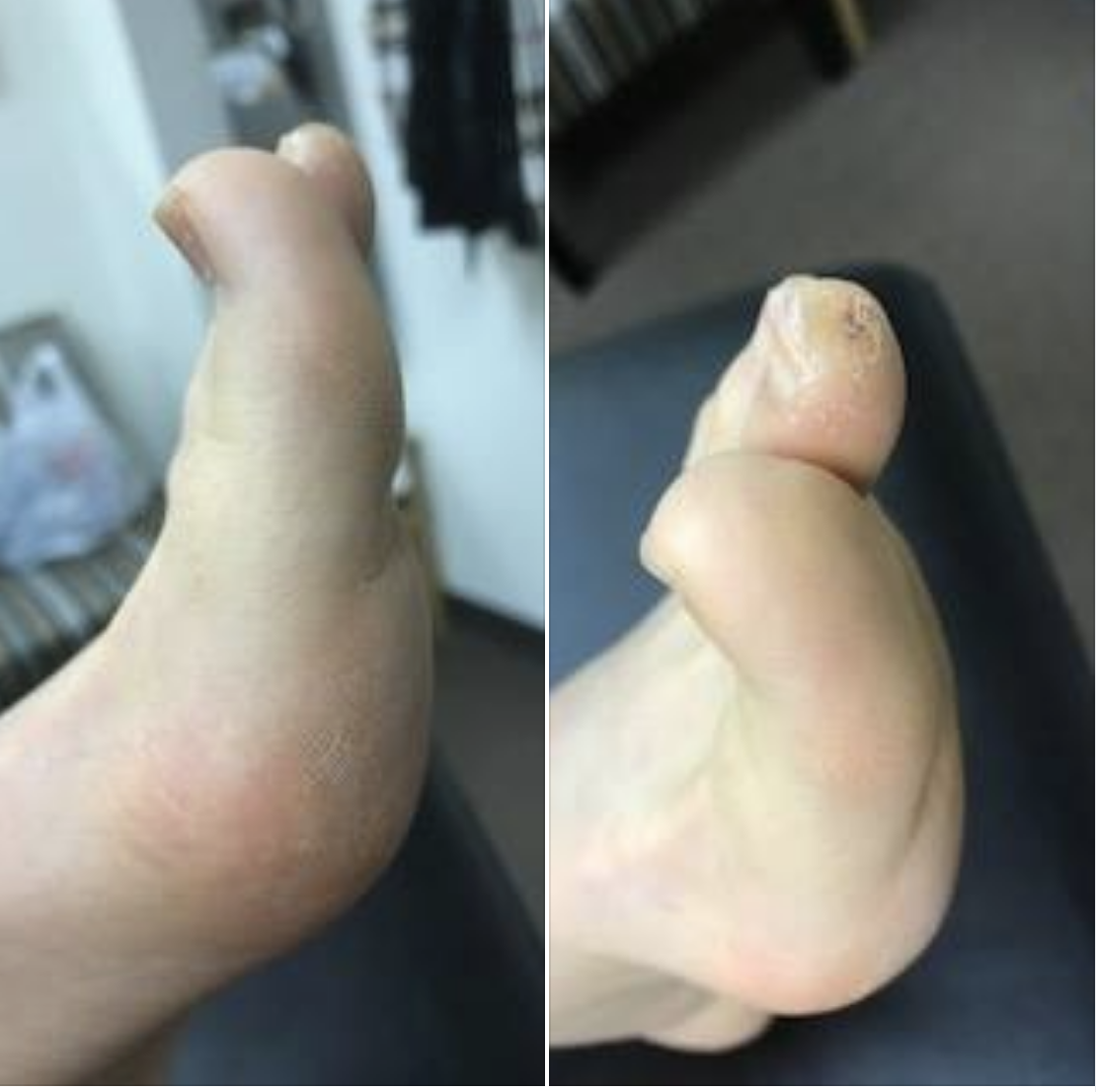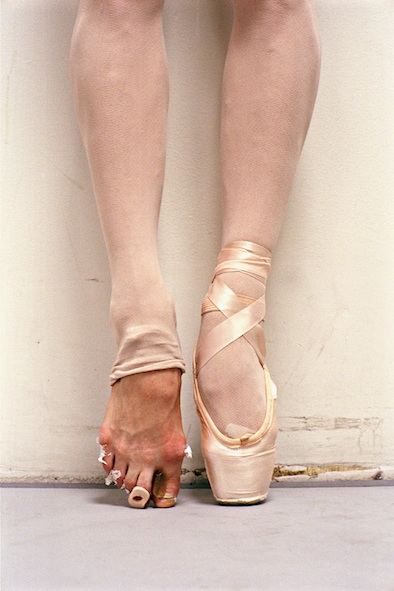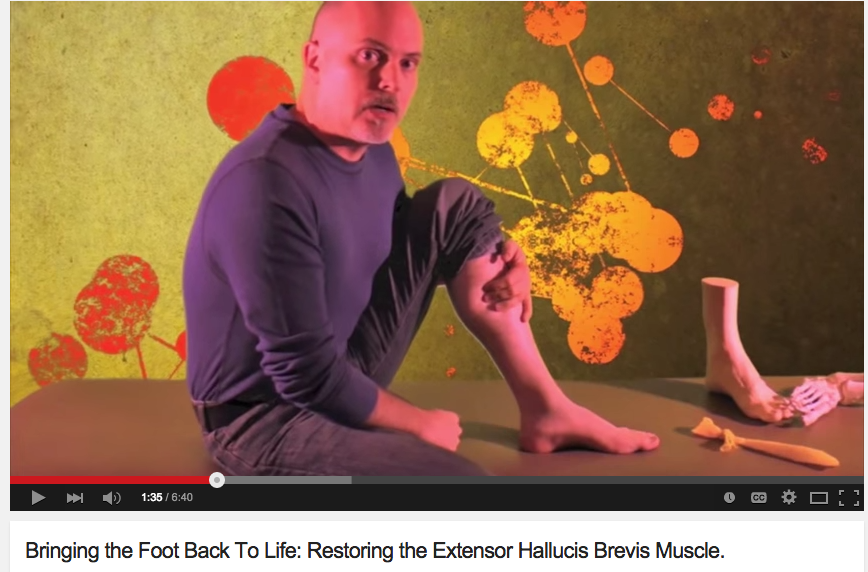The banana hallux. When the big toe curls upward
/Note: over-extension of the hallux and over-flexion of the 2nd toe. How can they both be so different at rest ? read on
This is common, but not commonly addressed. And, it can become a cause of symptoms.
Note how curled up into extension the hallux appears. This is just a representation of hyperextension of the distal phalange at the IP joint (interphalangeal joint).
This often occurs in hallux limitus/rigidus, where there is insufficient extension through the 1st MTP joint (metatarsophalangeal joint). In that condition, they client attempts to toe off, needing extension (dorsiflexion) at that joint, and they do not have it, so the extension can be found through arch collapse (1st metatarsal dorsiflexion) or through extension at the IP joint. Over time, form follows function and you will often see this presentation.
However, we do not need to see impaired ROM function at the 1st MTP joint, as in this case. This foot had full 1st MTP ROMs.
In this case, this toe represented massive imbalance between the long and short flexors and extensors. Specifically, increased use and strength in the EHL (extensor hallucis longus) and weakness and unawareness of how to even engage the short extensor (EHB).
Similarly, the pairing met the one we always see with this, that being weak and even difficulty of awareness to engage the FHL (flexor hallucis longus) and over-activity of the FHB (short flexor-flexor hallucis brevis).
There pairings: weak: EHB and FHL & overactive: EHL and FHB over time will result in this presentation.
In gait, you will note poor compentence and purchase of the hallux on the ground and thus a sharing of that load through overflexion hammering of the 2nd digit through increased FDL activity (note the great evidence of this with the thick obvious callus at the tip of the 2nd toe).
These clients can also often have pain at the plantar aspect of the Metatarsal head because of sesamoid imbalanced loading (sesamoiditis) as well as frank pain at the MTP joint dorsally or plantarward. One will often note a medial pinch callus on these feet medial to the metatarsal head, from a rotational spin toe off. Hallux valgus and bunion formation are also not uncommmon at all in this incompetent hallux presentation.
PS: the solution is so much more complex and involved than just towel-scrunches and marble pick up games. I mean, come on, we can do better that this team !
This requires some serious reteaching of how to use the foot, arch, tripod, windlass and foot-ground engagement skills.
Shawn and Ivo, the gait guys
#gait, #gaitproblems, #gaitcompensatins, #gaitanalysis, #bunions, #halluxvalgus, #sesamoiditis, #turftoe, #halluxlimitus, #pinchcallus, #bananatoe, #metatarsalgia, #thegaitguys, #hammertoe





































